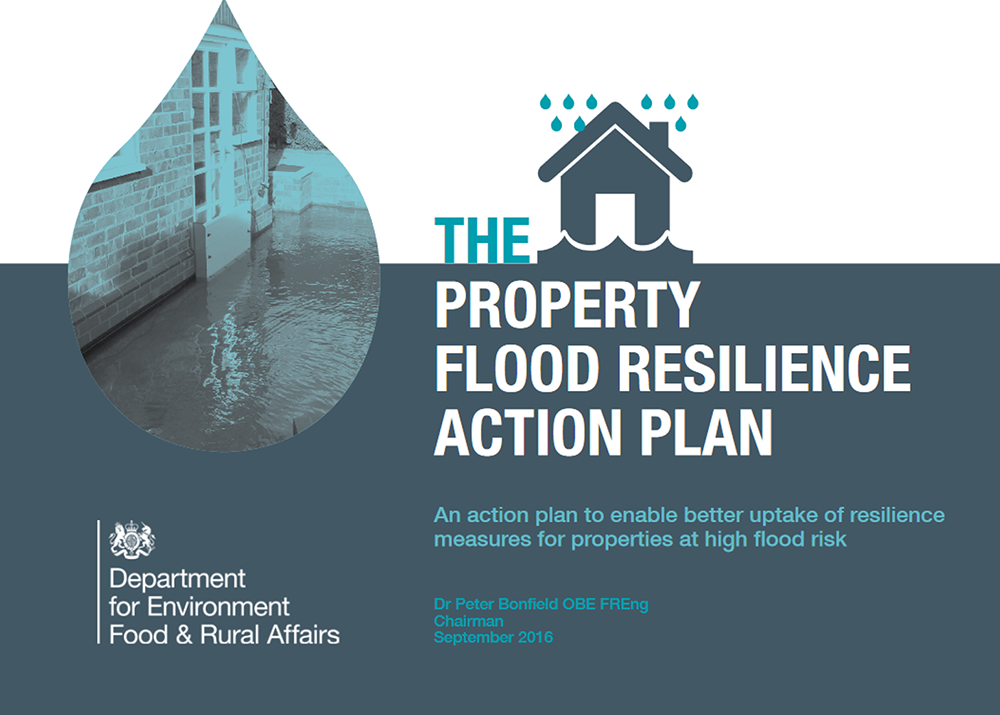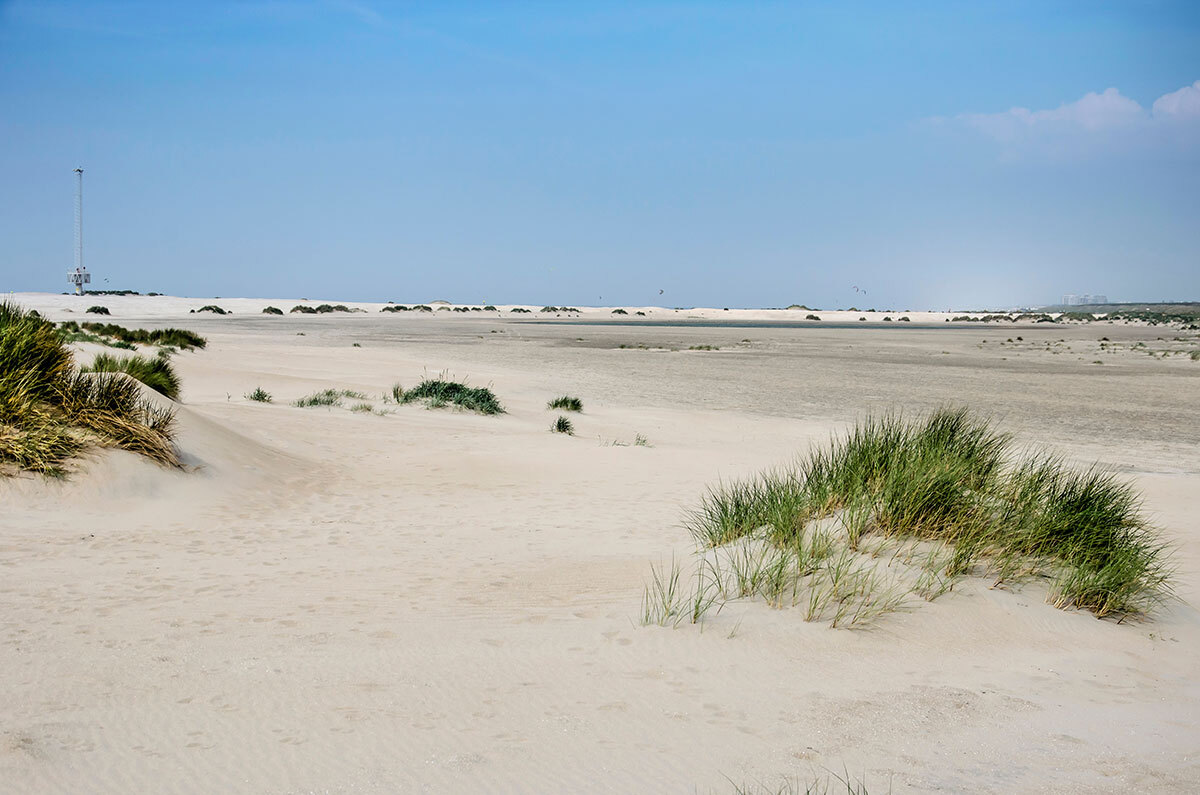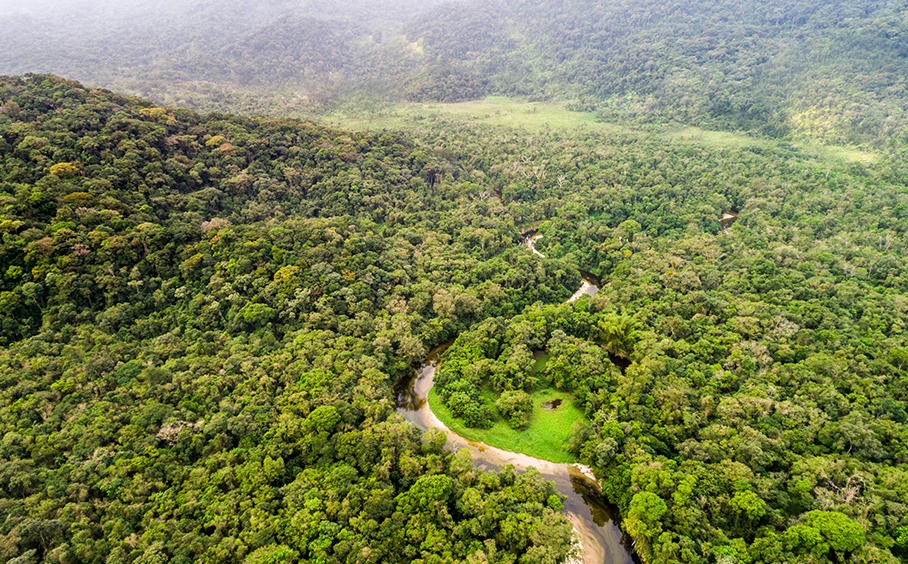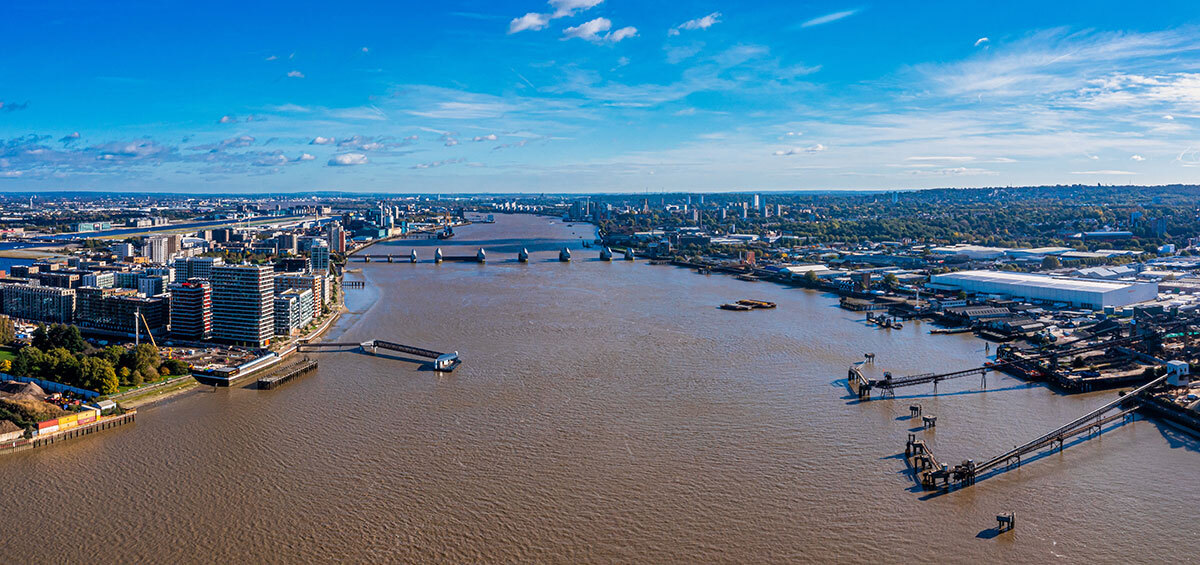
by Aerial Film Studio via AdobeStock
Adaptation activity
The Thames River in London, UK, has long-term storm surge flood countermeasures in place that take into account the uncertainties in projected climate change impacts. The flood disaster of 1953, which claimed over 300 lives prompted a comprehensive review of the city’s flood defense measures. The Thames River Estuary 2100 Plan, implemented in 2010, outlines a three-phase approach for the 21st century to adapt and respond to the evolving effects of climate change. The countermeasures aim to be future-proof based on the forecasts of future impacts and monitorization of sea-level rise. Long-term adaptation planning for initiatives can avoid excessive disruption, reduce economic burdens, and protect the natural environment.
For example, existing facilities may be raised or improved (see figure) based on the average sea level projected for 2040 ①, but if sea levels rise faster than predicted, schedules may be advanced ②.
The Thames Barrier, a UK seawall, provides a case study for the flood mitigation.
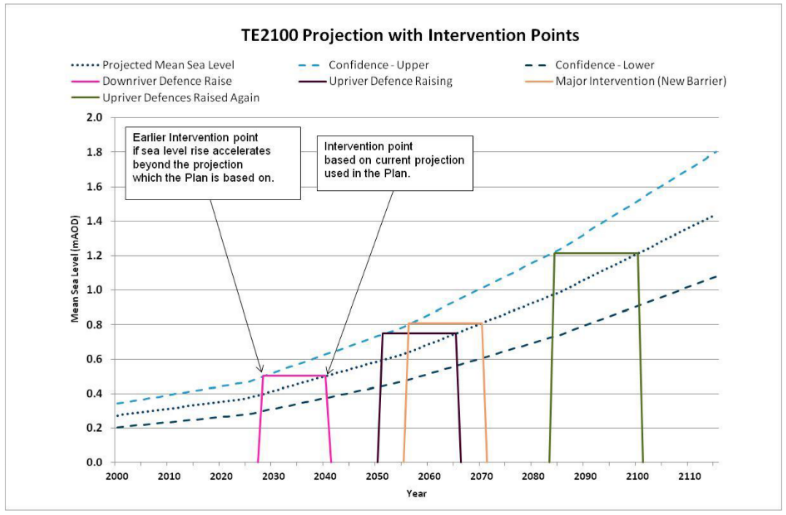
Fig. Forecast of the Thames River 2100 Plan and project timeline
(Source: Diagram of TE2100 5 Year Monitoring Review (2016) translated by National Institute for Environmental Studies)


